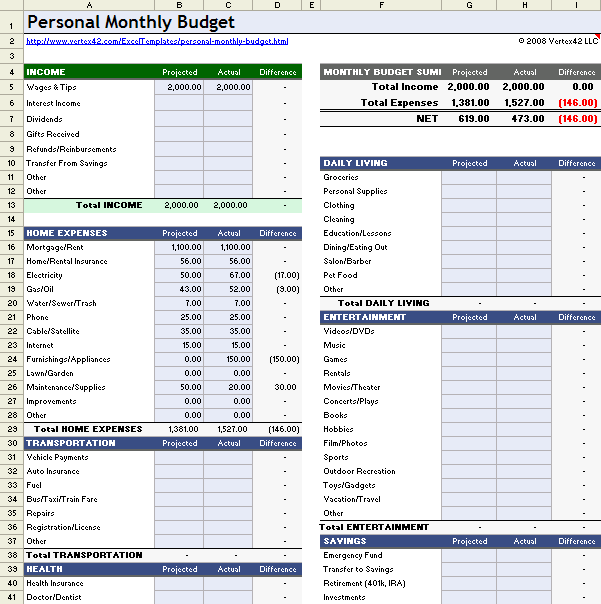Building a monthly budget isn’t just for people trying to cut expenses—it’s a powerful tool for gaining control over your financial future. Whether you’re trying to save more, pay off debt, or just stop living paycheck to paycheck, a well-crafted budget is the first step.
Here’s how to create one from scratch, even if you’ve never budgeted before.
Why Budgeting Matters
A monthly budget helps you:
- See where your money is going
- Make intentional spending choices
- Save for short and long-term goals
- Avoid debt and overdrafts
- Reduce financial stress
Budgeting doesn’t mean restricting your life—it means giving your money direction.
Step 1: Calculate Your Monthly Income
Start with your total monthly income:
- Your salary (after taxes)
- Freelance work or side hustles
- Passive income (rental, dividends)
- Government support or child benefits
Use your average monthly income if it varies.
Step 2: List All Monthly Expenses
Make a list of everything you spend money on in a typical month. Categorize your expenses as:
A. Fixed Expenses
- Rent or mortgage
- Utilities (water, gas, electricity)
- Internet and phone
- Insurance
- Loan payments
B. Variable Expenses
- Groceries
- Transportation
- Dining out
- Entertainment
- Clothing
- Subscriptions
Be honest and as detailed as possible. Review your bank statements to fill in any gaps.
Step 3: Subtract Expenses from Income
Take your total income and subtract your total expenses.
You’ll get one of three results:
- Surplus: Great! Allocate extra to savings or debt repayment.
- Balanced: You’re breaking even—consider reducing or reprioritizing.
- Deficit: Time to cut costs or find ways to increase income.
This step helps you identify your financial reality and set priorities.
Step 4: Set Financial Goals
Your budget should reflect what matters most to you.
Examples of goals:
- Build a $1,000 emergency fund
- Pay off credit card debt
- Save for a vacation
- Invest $100/month for retirement
Set short-, medium-, and long-term goals. Use them to guide how you allocate money.
Step 5: Choose a Budgeting Method
Here are a few popular approaches:
✅ Zero-Based Budgeting
Every dollar is assigned a “job” until there’s $0 left. Great for people who like structure.
✅ 50/30/20 Rule
- 50% needs
- 30% wants
- 20% savings/debt
Simple and effective for beginners.
✅ Envelope System (Cash-Based)
Put cash in labeled envelopes by category. When it’s gone, it’s gone.
Choose a method that fits your lifestyle and personality.
Step 6: Use Budgeting Tools or Apps
Budgeting doesn’t have to be done on paper. Try:
- YNAB (You Need A Budget)
- Mint
- Goodbudget
- Spreadsheets (Google Sheets, Excel)
Find what makes tracking your money easiest for you.
Step 7: Review and Adjust Weekly or Monthly
Your budget is a living plan—not something you create once and forget. Review your progress regularly:
- Did I stay within my budget?
- What did I overspend on?
- What can I improve next month?
Adjust your categories and goals as your life changes.
Pro Tips for Better Budgeting
- Round up expenses to avoid surprises
- Plan for irregular costs (birthdays, car maintenance)
- Set up automatic transfers to savings
- Cut subscriptions you don’t use
- Review bank statements monthly
Final Thoughts: Budgeting Is a Form of Freedom
Budgeting gives you permission to spend—without guilt. When you know exactly where your money is going, you can take control of your financial future with confidence.
Start simple. Stay consistent. Reap the rewards.
